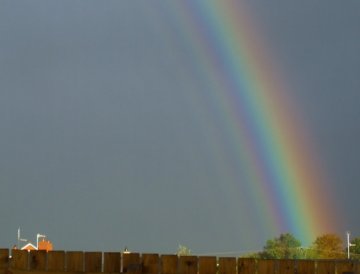 Autumn is here, and it's a wonderful time for stargazing. Find out what's up from Spaceweather PHONE.
Autumn is here, and it's a wonderful time for stargazing. Find out what's up from Spaceweather PHONE.
COMET SWAN: Comet Swan (C/2006 M4) is moving into the evening sky. Too dim for the naked eye, the comet is nevertheless very pretty in the eyepiece of a backyard telescope. Look for it beneath the handle of the Big Dipper after sunset. Sky maps: Oct. 11, 12, 13, 14.
AROUND THE SUN: Suppose you could switch off the sun, like turning off a light bulb. What would you see? Answer: Two planets, a binary star and an exploding cloud of gas.
That's the count, according to the Solar and Heliospheric Obsevatory (SOHO). Yesterday, a coronagraph onboard SOHO blocked the sun's glare to reveal Venus, Mercury, Spica and a coronal mass ejection (CME), all crowded around the sun:

SOHO coronagrah, Oct. 10, 2006: movie.
Mars, Venus and Spica are converging on the sun, and on Oct. 17th they will surround it in a triangle only a few degrees wide. Join SOHO for a ringside seat.
INSIDE A RAINBOW: The next time you see a rainbow, look carefully at the colors. There's red on the outside, then orange, yellow, green and, finally, on the inside, blue.
That's how a rainbow stops, on blue. Except this rainbow, photographed Oct 5th by Martin McKenna of Maghera, Northern Ireland, kept going--green, purple, green, purple, green:

Atmospheric optics expert Les Cowley explains: "The extra bows just inside the primary rainbow are called supernumeraries. They were so named because 17th century theories of the rainbow could not explain them -- they were thought of as extras and not supposed to exist! Supernumeraries are produced by the interference between light waves and nowadays they tell us that the raindrops are small."
"Want to make your own clear and sharp supernumeraries? Look at the rainbow in the fine spray of a garden hose."

